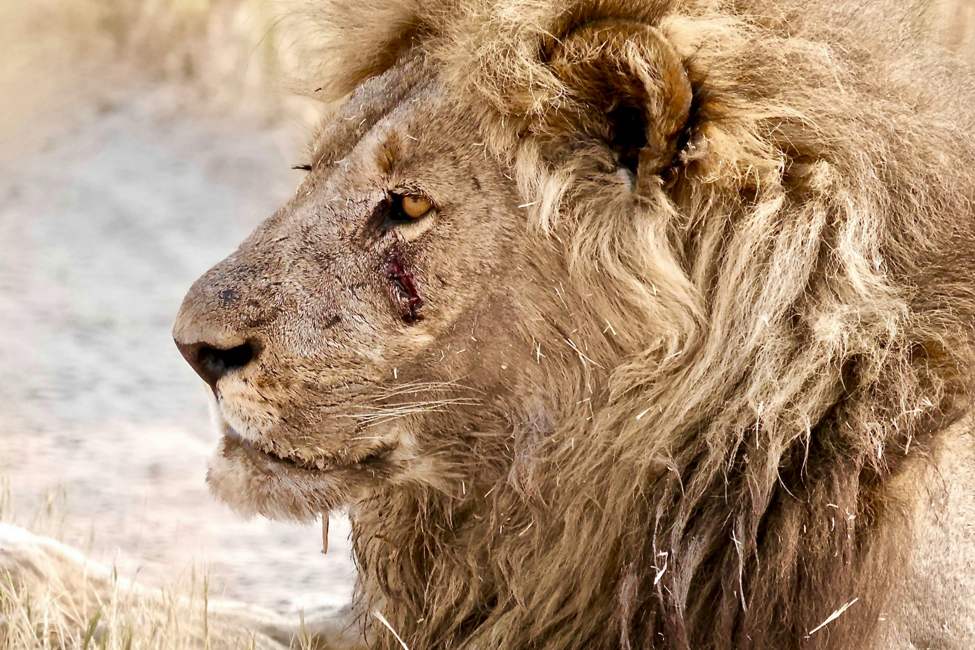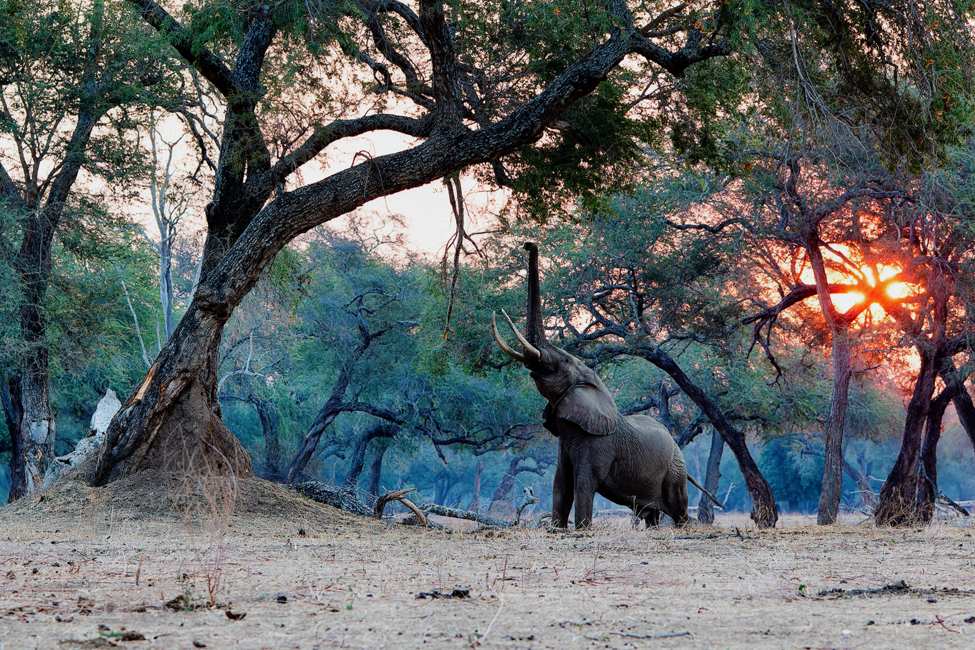Discover the Secrets of Mana Pools National Park
Nestled along the southern bank of the mighty Zambezi River, Mana Pools National Park in Zimbabwe is a haven for wildlife. The park is named for its four main permanent pools (“mana” means “four” in the local Shona language), which expand across the floodplains each rainy season and contract during the dry season, but remain large enough to support an abundance of animals.
With a rushing river to the north and the scenic granite peaks of the Zambezi escarpment to the south, Mana Pools has been naturally protected from human encroachment over the centuries. This has created a sanctuary where wildlife can thrive. Diverse ecosystems—including floodplains, islands, savannahs, and forests of baobabs, towering mahoganies, wild figs, and ebony trees—create ideal habitat for elephants, lions, hippos, and an array of bird species. Mana Pools is also famous for its large population of colorful African wild dogs.
Mana Pools covers 850 square miles in northern Zimbabwe and is part of an UNESCO World Heritage Site recognized for its ecological importance and natural beauty. It lies just across the river from Zambia’s Lower Zambezi National Park. Despite its many charms, Mana Pools receives fewer visitors than many of southern Africa’s more famous parks. That creates a great opportunity for travelers, who are guaranteed a truly wild and remote experience while visiting Mana Pools.
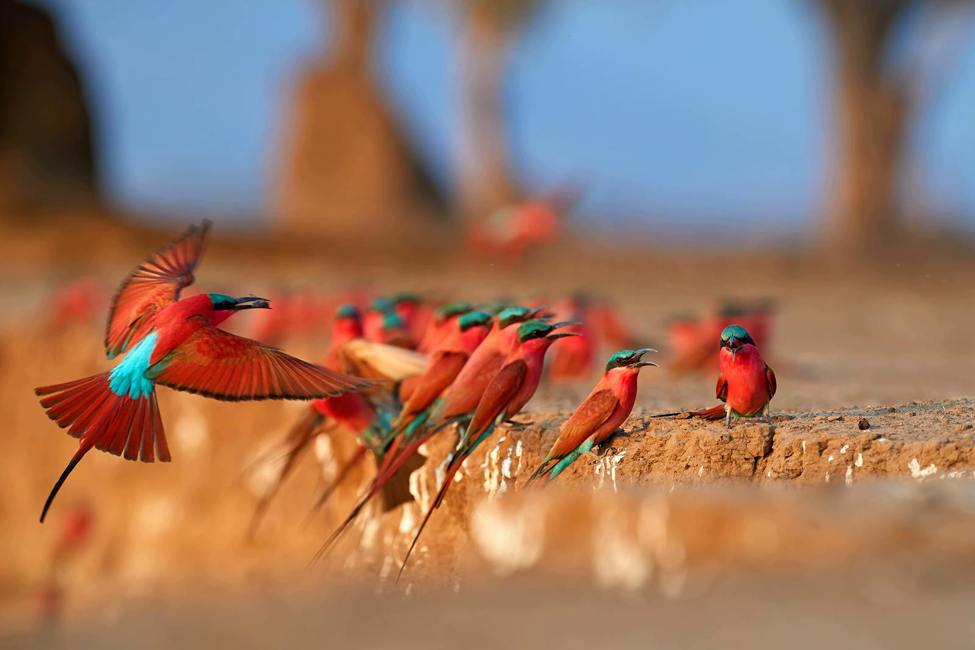
Each year, large flocks of carmine bee-eaters nest on the banks of the Zambezi River at Mana Pools National Park, Zimbabwe.
Biodiversity of Mana Pools National Park
The variety of wildlife at Mana Pools National Park is simply astounding, from majestic elephants wandering freely along the riverbanks to stealthy lions stalking their prey in the grasslands.
The park boasts some of the highest number of hippos and crocodiles in the entire country, as well as abundant populations of zebras and Cape buffalos during the dry season. Additionally, the park serves as a habitat for vulnerable and near-threatened species such as cheetahs, leopards, and brown hyenas. It is home to four of the Big Five safari animals—all but rhinos.
With around 100 African wild dogs in six packs, Mana Pools is one of the best places in the world to see these endangered canines. Smaller, mostly nocturnal mammals include the charismatic honey badger and endangered pangolin.
More than 370 bird species have been recorded at Mana Pools, earning it a designation as an Important Bird Area by BirdLife International. From colorful carmine bee-eaters to majestic fish eagles and elusive African skimmers dragging their beaks through the water’s surface in search of fish—there are endless opportunities to witness nature’s symphony in full swing. The area also shelters countless amphibians, reptiles, and multi-colored insects. Exploring Mana Pools National Park feels like stepping into another world—a place where humans are mere guests in nature’s grand theater.
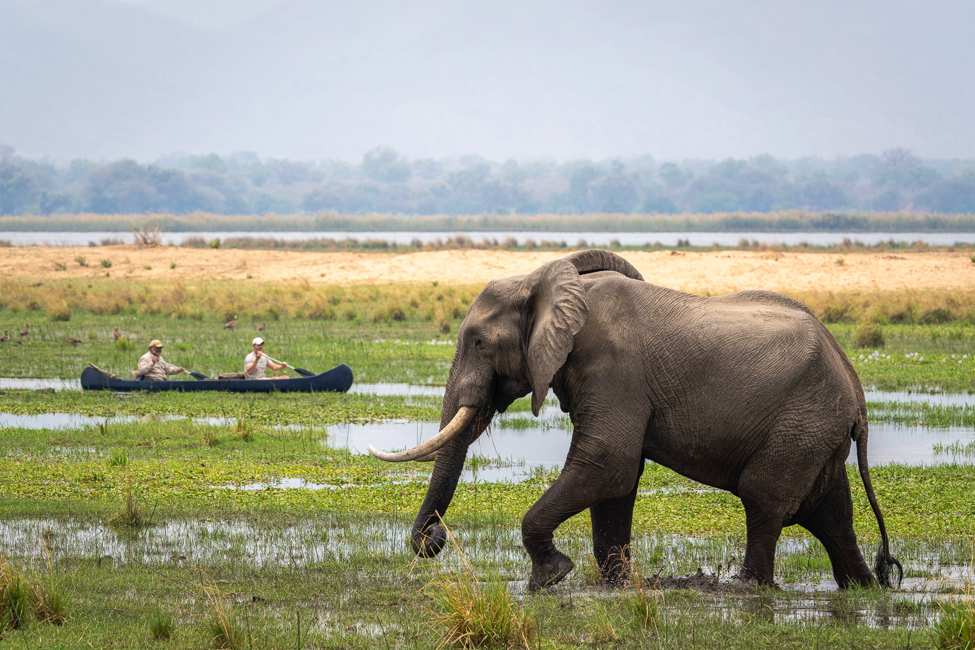

Canoeing through Mana Pools’ many waterways leads to amazing views of wildlife (Dana Allen for Robin Pope Safaris). A guide helps travelers identity an animal skull on a walking safari in Mana Pools (African Bush Camps).
What to do at Mana Pools National Park
You can look forward to an array of activities at Mana Pools. Guided walks are a special perk of Mana Pools National Park, creating an immersive experience that allows you to discover hidden gems that may otherwise be missed during traditional game drives. Guided walks are ideal for bird watching and close encounters with plants and wildlife. They’re also a great way to look for small animals like elephant shrews and other Little Five safari animals.
Of course, game drives also have their place—they allow you to cover greater distances and can be enjoyed even when your legs are tired!
We also recommend travelers to Mana Pools enjoy a canoe trip or river cruise—or both! Exploring Mana Pools National park by water is the best way to see hippos, crocodiles, and many shorebirds. You are also likely to see elephants and other animals splashing on the banks, particularly during the dry season.
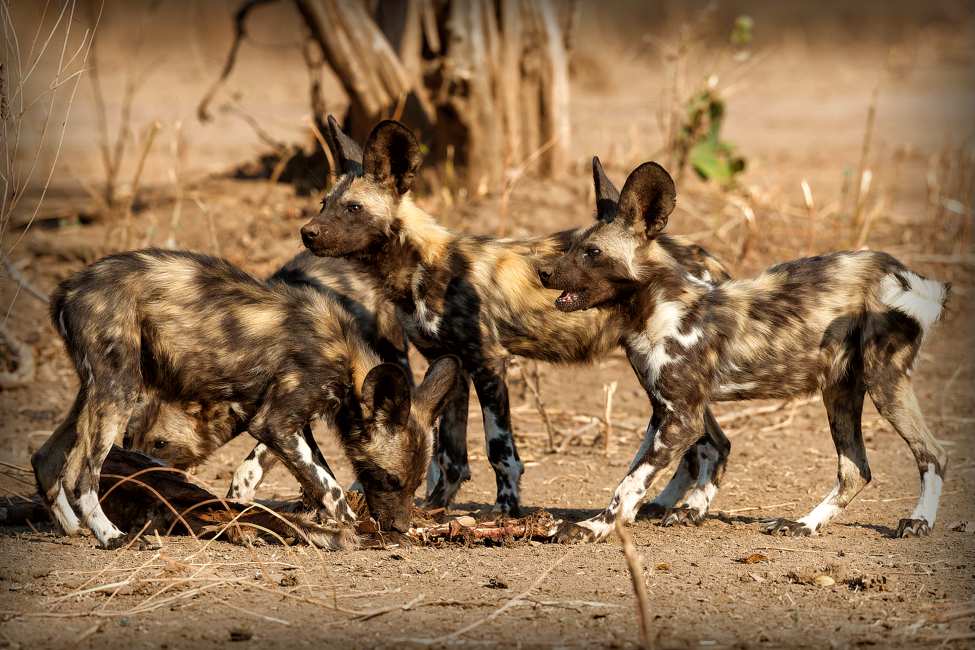
Mana Pools is one of the best places to see African wild dogs—including young pups like these!
Visiting Mana Pools National Park
A trip to Mana Pools is an absolute must for any nature lover or adventurer. Dry season (April—September) is the most popular time for visiting, as big game gather in more concentrated numbers around watering holes, making them easier to spot. Temperatures during this time of year are also cooler. Maximum temperatures are around 75°F in June and July, and around 84°F in May and August. However, avid birders may wish to visit in the hotter months of December through March, when songbirds are in their breeding plumage.
The park offers accommodations for a variety of tastes and budgets, from riverside camps to five-star luxury lodges. Ujuzi will work with you to find the perfect place for your needs. Regardless of which accommodations you choose, there is nothing like falling asleep to the sound of hippos grunting contentedly among a nocturnal chorus of frogs and other musical creatures.
Don’t miss out on Zimbabwe’s best-kept secret—contact us to start planning your trip today!
Sign up for the Ujuzi Newsletter!
From top travel tips to innovative safaris and conservation movement, get inspired to plan your next African safari!


